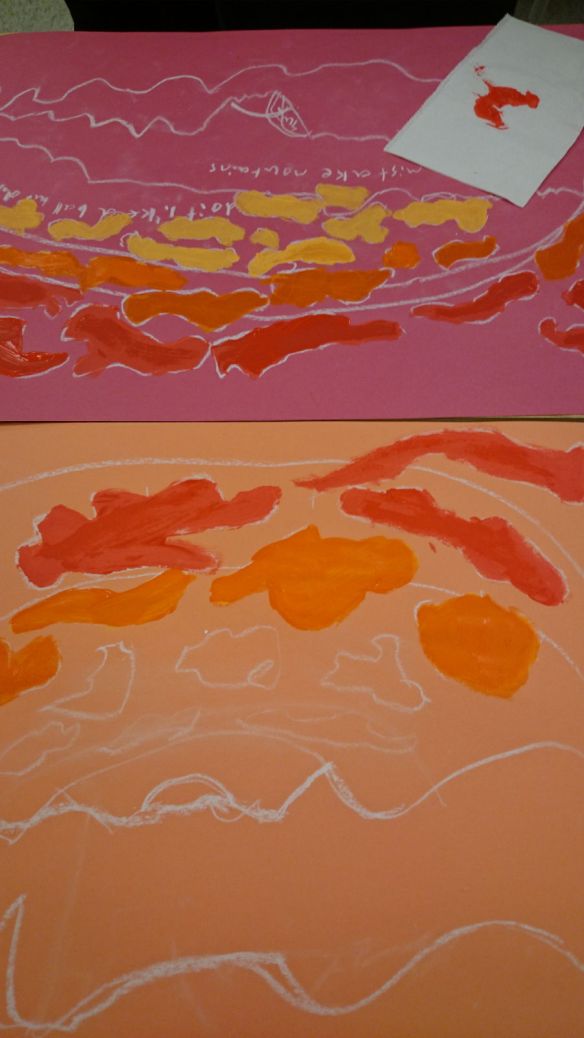I will often have elementary teachers ask me why I paint on coloured construction paper rather than white paper or manilla coloured paper. First off…let’s talk about a ground.
A ground or primer is the background surface on which you paint. It is usually a coating such as a gesso primer, which physically separates your painting from the support. It is the foundation of a painting, applied onto the raw canvas, paper, or other support.
When it comes to elementary children, the teacher can provide the foundation for any painting and drive her/his own chosen outcome, in a way, by selecting the colour of the ground. I always recommend construction paper. It is reasonably priced, compared to the cost of bond paper and it has tooth! Just like the teeth in our heads, paper has tooth. The more tooth, the more easily it is for oil pastels, chalk pastels and tempera paint to adhere. This is something to think about as you choose your activities and this is something they don’t always teach YOU in your methods classes. Believe me, the learning never ends.
I thought that this week I might try painting the same subject (Valentines) with Division I students, but provide different coloured grounds. What happens when you create a ground other than white, is that you highly energize the surface before you even begin. It feels exciting and fun to go ahead with a project. Next, a coloured ground will do something to colour, in this case, tempera paint. Sometimes the effect is NOT desired…you will learn what works by experimenting with what is stock piled in your storage spaces. Let the students leave little bits of their paper ‘shining’ through in places. Notice how delightful these are compared to white paper coming through in places.
This week, with grades one, two and three, I reinforced the techniques of using a flat brush to make wide lines and the same brush to make thin lines. Demonstrate, initially, to show the students how to pivot their brush to create thin lines. They are actually surprised by this simple tip. Now…for the grounds.
PURPLE CONSTRUCTION PAPER GROUND
BLUE CONSTRUCTION PAPER GROUND
YELLOW CONSTRUCTION PAPER GROUND
The paint colours you provide the children with are also important considerations. For a class of 26, you want to mix up 15 buckets (two brushes in a bucket) (only 1/4 full) of mixed tempera. In the three projects above, red and white are pure and out of the bottles. Every other colour has a little something else mixed in. You can do it! For tints, pour in the white to fill the bottom of the bucket and add a drip of another colour. See what happens. You’ve done those colour mixing experiments with your students in science…you can make lovely tints of orange and add a bit of red and see how it changes. No! Don’t add black to red to make dark red! Instead, add a little titch of blue and see what happens!
So, take a look at the paintings above and ask yourself how each ground changed the experience of very similar colours. The paintings on yellow, were painted with an analogous colour scheme…red, yellow and white.
The other two sets of paintings included blue and so they were painted using a primary colour scheme….red, yellow, blue and white.
There’s a song out there, “I Hope You’ll Dance!” My motto is, “I Hope You’ll Paint!”
Have fun! And happy Valentine’s next week!






























































